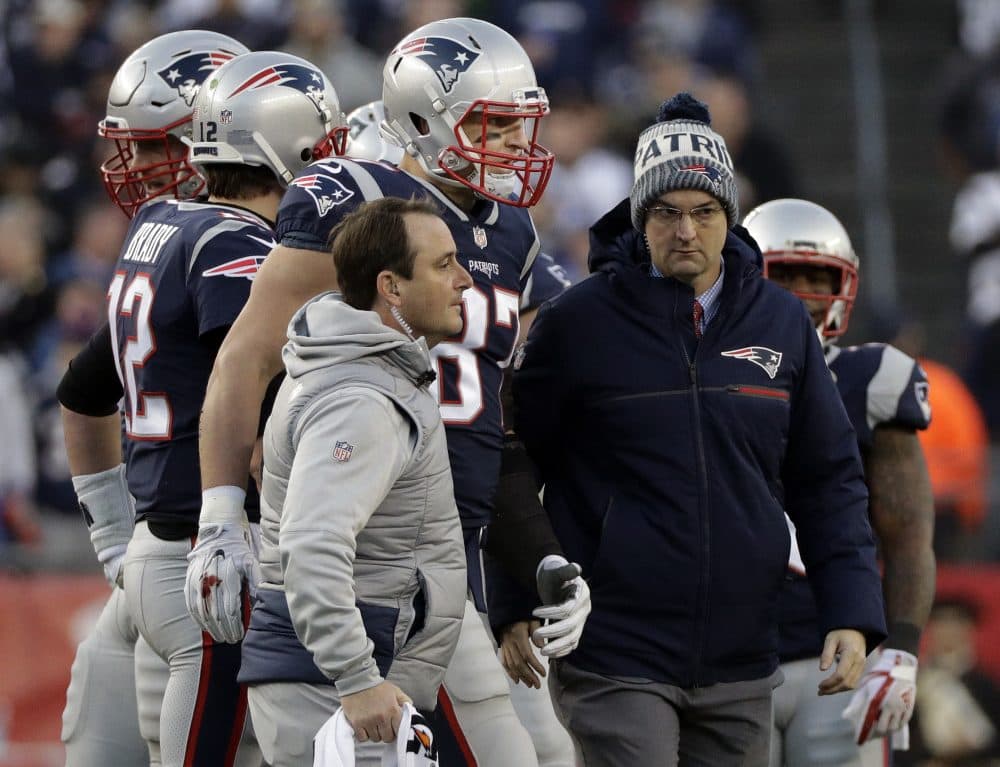Advertisement
Here’s The 5-Step Concussion Protocol Gronk Is Going Through This Week
Resume
Once Patriots tight end Rob Gronkowski was diagnosed with a concussion after a helmet-to-helmet hit in the AFC Championship Game, he entered the NFL's concussion protocol.
What does that entail? It’s a five-step process that takes a player from a head injury to return to play.
Patriots wide receiver Danny Amendola went through the concussion protocol earlier this season and said this week, “Personally, I felt very confident coming back off a concussion.” He added that the treatment guidelines “have come a long way, just in the past five years. Safety is huge in our game with how violent it really is.”
Amendola said he’s had recent conversations with Gronkowski, but nothing about concussions.
Still, Amendola said of the tight end, “He looks like Gronk to me.”
These are the five steps Gronkowski has followed since suffering his concussion on Jan. 21. He’s now on the fourth step, awaiting clearance to return to the field for "full football activity" before Sunday's Super Bowl.
1. Rest and recovery: Step 1 involves physical and cognitive rest. According to the NFL’s return-to-participation protocol, a player must rest "until his signs and symptoms and neurologic examination, including cognitive and balance tests, return to baseline status." During this time, a player can stretch and work on his balance, but not physically push himself beyond that. Also, the NFL protocol states that during Step 1, the player should limit or avoid electronics, social media and team meetings until symptoms go away.
2. Light aerobic exercise. That means activities like riding a stationary bike, light running on a treadmill and more active stretching. Team medical personnel will gradually increase a player’s workload, but should stop activities if concussion-related symptoms resurface. On Step 2, players are also permitted to return to regular team meetings and study film.
3. More aerobic exercise and the introduction of strength training. This step builds up the player’s activity level and includes the stress and strain of weightlifting. And the protocol states that once the player has “demonstrated his ability to engage in cardiovascular exercise and supervised strength training without recurrence of signs or symptoms, he may proceed to the next step.”
4. "Football specific activities." The player can participate in non-contact drills, including throwing, catching and running. On this step, the NFL protocol says there can be no contact with other players or objects, including tackling dummies or sleds. If the player tolerates this level of activity without any recurrence of signs or symptoms, he moves to the fifth and final step.
5. Full football activity and clearance. The final step of the NFL's concussion protocol allows a player to resume practicing without any limitations. After the team physician clears the player to compete, an independent neurological consultant (INC) must examine the player. According to the protocol, the INC "must be provided a copy of all relevant reports and tests, including the player-patient’s neurocognitive tests and interpretations.” If the consultant concurs with the team physician, then the player can participate in the next game.
This segment aired on February 1, 2018.

